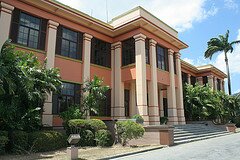Unveiling the Wonders of Fluid Mechanics and Flow Control
I. Introduction
Fluid mechanics, a subfield of engineering and physics, is the study of how fluids move and interact with solid surfaces. It serves as the backbone for various engineering disciplines and scientific research, providing essential insights into the behavior of liquids and gases. Flow control, an integral part of fluid mechanics, involves manipulating fluid behavior to optimize performance and efficiency in diverse applications. In this comprehensive guide, we delve into the art and science of flow control within the realm of fluid mechanics. This article is tailored to engage and educate engineering enthusiasts, engineering students, and scientists who seek to gain a deeper understanding of this fascinating and interdisciplinary field. If you are studying a technical specialty and you need to prepare an essay or essay on a topic related to the title of this article, just send a request write my essay for me to https://writessay.org/.
II. The Fundamentals of Fluid Mechanics
A. Properties of Fluids
Fluids, which encompass both liquids and gases, possess unique properties that distinguish them from solids. A fundamental grasp of these properties is essential in understanding fluid mechanics:
- Density: Density is the measure of mass per unit volume of a fluid, dictating its weight and behavior under the influence of gravity.
- Viscosity: Viscosity is a measure of a fluid's internal friction or resistance to flow. It plays a crucial role in the determination of a fluid's behavior, whether it flows smoothly or with turbulence.
- Pressure: Pressure is the force per unit area exerted by a fluid. Understanding pressure variations in different fluid systems is vital for numerous applications.
B. The Behavior of Fluids
Fluids can be broadly categorized into static and dynamic states:
- Fluid Statics: Fluid statics is the study of fluids at rest. It explores phenomena such as buoyancy and the equilibrium of forces in fluids not in motion.
- Fluid Dynamics: Fluid dynamics, on the other hand, focuses on fluids in motion. It encompasses the study of fluid flow patterns and behavior, including both laminar and turbulent flow regimes.
- Types of Fluid Flow: Understanding the distinctions between laminar (smooth, predictable) and turbulent (chaotic, irregular) flow patterns is crucial for analyzing and controlling fluid behavior.
C. Key Equations and Principles
Exploring the core equations and principles that underpin fluid mechanics:
- Continuity Equation: The continuity equation, based on the principle of conservation of mass, illustrates how the mass flow rate of a fluid remains constant within a closed system.
- Bernoulli's Equation: Bernoulli's equation relates pressure, velocity, and elevation in a moving fluid. It's a fundamental tool for understanding the balance of energy in fluid flow.
- Navier-Stokes Equations: The Navier-Stokes equations are a set of partial differential equations that describe the motion of fluid substances. They are a cornerstone for solving complex flow problems and offer valuable insights into fluid behavior under various conditions.
III. Flow Control Mechanisms
A. Introduction to Flow Control
Understanding the significance of controlling fluid flow and its applications across various industries. Flow control is a critical aspect of engineering and science, enabling the optimization of processes, efficiency, and safety.
B. Passive Flow Control
Streamlining and Shapes: Passive flow control methods often involve optimizing the shapes of objects to reduce fluid resistance. By carefully designing the contours of surfaces, engineers can enhance the aerodynamics and hydrodynamics of vehicles and structures, resulting in reduced drag and increased efficiency.
Surface Roughness: Surface roughness can also influence fluid behavior. By strategically altering the texture of surfaces, engineers can manipulate boundary layers and control flow separation, affecting the overall performance of vehicles, equipment, and systems.
C. Active Flow Control
Mechanical Devices: Active flow control techniques employ mechanical components, such as actuators and vanes, to manipulate fluid flow. These devices can change the direction, speed, or turbulence of the fluid, which is particularly valuable in aviation, HVAC systems, and industrial processes.
Fluidic Devices: Fluidic devices leverage the intrinsic properties of fluids to control flow. By using no moving parts, these devices are often more durable and less susceptible to wear and tear. Applications range from simple fluid amplifiers to intricate microfluidic systems.
Pulsed Jet Actuators: Pulsed jet actuators utilize intermittent bursts of fluid to influence flow patterns. They are used in aeronautics, automotive design, and environmental engineering to improve lift, reduce drag, and enhance combustion processes.
D. Control Strategies
Exploring strategies for managing fluid flow:
- Feedback Control: Feedback control systems employ sensors to monitor fluid parameters and provide input for adjustments in real-time. This is crucial in applications where precise control and stability are required, such as aircraft flight control systems.
- Open-Loop Control: In open-loop control, predefined inputs are applied to manipulate flow. Although less adaptive than feedback control, it is still valuable in various scenarios, including the regulation of flow rates in chemical processing.
- Closed-Loop Control: Closed-loop control combines feedback from sensors with predefined inputs for continuous adjustments. It strikes a balance between adaptability and stability, making it suitable for applications like hydraulic systems in construction equipment.
IV. Applications of Flow Control
A. Aerospace Industry
Aircraft Design: Flow control plays a pivotal role in designing aircraft for optimal aerodynamics. Innovative wing designs, such as winglets and morphing wings, are employed to reduce drag and increase fuel efficiency.
Turbomachinery: Within the aerospace sector, turbomachinery, including jet engines and turbines, relies on precise flow control to enhance performance, fuel combustion, and safety. Engineers continually work to improve these systems through innovative flow control methods.
B. Automotive Engineering
Vehicle Aerodynamics: Achieving better fuel efficiency and vehicle stability hinges on effective aerodynamic design. Flow control is integral to shaping cars, trucks, and even racing vehicles, such as Formula 1 cars, for reduced drag and improved handling.
Engine Performance: Managing fluid flow within internal combustion engines is vital for optimizing power output, fuel efficiency, and emissions. Advanced fuel injection and exhaust systems leverage flow control to achieve these objectives.
C. Environmental Engineering
Pollution Control: Environmental engineers employ flow control strategies to reduce emissions and pollutants from industrial processes and power plants. This involves fluid dynamics simulations, exhaust gas treatment, and stack design.
Water Management: Water treatment, distribution, and flood control are enhanced through the use of flow control techniques. By managing fluid flow within water supply networks and drainage systems, engineers can ensure a stable and efficient supply of clean water while mitigating flooding risks.
D. Biofluid Mechanics
Blood Flow Control: In medical applications, understanding and controlling blood flow are critical. Biofluid mechanics plays a vital role in the design of medical devices, such as artificial hearts and vascular stents, as well as in diagnosing and treating cardiovascular conditions.
Respiratory Systems: The flow control of air within the human respiratory system is fundamental to efficient oxygen exchange. Researchers study the mechanics of breathing and respiratory diseases to improve treatment and patient care.
V. Advanced Research and Innovations
A. Emerging Technologies
Microfluidics: Microfluidics is an emerging field that focuses on manipulating small-scale fluid dynamics. It has revolutionized various scientific disciplines, including biology and chemistry, by enabling precise control over minuscule fluid volumes. Applications range from lab-on-a-chip devices for diagnostics to advanced drug delivery systems.
Nanotechnology Applications: Nanoscale flow control is at the forefront of materials science and engineering. By harnessing the unique properties of nanoparticles, researchers are developing cutting-edge technologies, such as self-healing materials and nanofluids, with applications in fields as diverse as electronics, energy, and healthcare.
B. Case Studies of Cutting-Edge Research
Flow Control in Hypersonic Flight: Hypersonic flight research involves pushing the boundaries of aerodynamics. Engineers are developing methods to control flow at hypersonic speeds, enabling next-generation aircraft and spacecraft.
Wind Tunnel Experiments: Wind tunnels remain indispensable in aerodynamic research. Researchers conduct experiments to test and refine flow control techniques, making them essential for improving vehicle and building design.
Flow Control in Microdevices: Microfluidics and lab-on-a-chip technologies are driving innovations in healthcare and diagnostics. These devices offer precise control over tiny fluid samples, making them invaluable in fields like genomics and point-of-care testing.
VI. The Art of Designing Flow Control Systems
A. Engineering Principles
Understanding the core principles of designing flow control systems is essential. Engineers consider factors like fluid properties, system constraints, and performance objectives when designing and implementing flow control solutions.
B. Practical Tips and Guidelines
Engineers and scientists rely on practical guidelines and best practices to address real-world flow control challenges. These may include selecting the right control method, optimizing system components, and ensuring system safety.
C. Ethical Considerations
Ethical considerations encompass the responsible use of flow control techniques. Engineers must ensure that their work aligns with safety, environmental, and ethical standards, particularly in areas like pollution control and biofluid dynamics.
VII. Challenges and Future Directions
A. Current Challenges in Flow Control
Flow control is not without its challenges. Engineers and researchers grapple with issues like energy efficiency, control system optimization, and the development of cost-effective technologies.
B. Environmental Sustainability
As the world faces environmental challenges, flow control is increasingly seen as a tool for minimizing environmental impact. Innovations in clean energy and eco-friendly technologies often rely on advanced flow control.
C. Promising Areas for Research and Innovation
Future directions in flow control research are exciting. From exploring new materials to applying artificial intelligence to control systems, the potential for innovation in flow control is vast.
VIII. Conclusion
In conclusion, the field of fluid mechanics and flow control is a multifaceted and dynamic area of study that impacts a wide range of industries and scientific disciplines. From the fundamental principles governing fluid behavior to cutting-edge research and real-world applications, this field continuously evolves. Engineers, scientists, and enthusiasts are encouraged to explore, engage, and contribute to the ever-expanding world of fluid mechanics and flow control. It is a field that not only enhances our understanding of the physical world but also shapes the technologies and solutions of the future.

